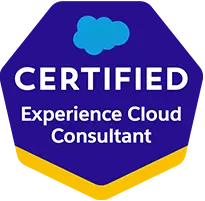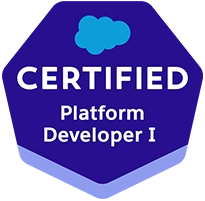Top Highlights in the Salesforce Winter ’24 Release
Flow Integration
Flow Integration
MuleSoft Composer for Salesforce, also known as Flow Integration, has been incorporated into Salesforce Flow. With Flow Integration, integrating data from various systems and triggering processes within flows becomes effortless using a point-and-click approach. By establishing secure processes to link information across diverse systems, you can construct a unified, real-time perspective of your customers and business operations.
Send Salesforce Data to an External Server Without Code via HTTP Callout (Generally Available)
Send Salesforce Data to an External Server Without Code via HTTP Callout (Generally Available)/span>
If using the HTTP Callout’s GET method isn’t enough, there’s good news: you can now utilize the POST method to send Salesforce data to an external server through Flow Builder. This feature, now generally available, includes some changes since the Summer ’23 release.
You can now easily integrate external data using the new PUT, PATCH, and DELETE methods. This update also provides more context on HTTP callout parameters, speeds up JSON sample validation, and offers better information organization for external service registration.

Data Cloud Triggered Flow
Data Cloud Triggered Flow
A new feature introduced in the Winter ’24 release that involves triggered flows related to changes in data within the Data Cloud. Users who have access to Data Cloud can create these new Data Cloud-triggered flows from the updated Flow screen. Once you’ve selected the Data Cloud-triggered flow option, you’ll be prompted to configure the Start element with the necessary conditions for the flow to be activated. This feature allows for automation based on changes to data within the Data Cloud.

Build Screen Flows with Reactive Components (Generally Available)
Build Screen Flows with Reactive Components (Generally Available)
To enhance user experience, minimize the number of screens users need to navigate through and create screens that provide a seamless, single-page application feel. Achieve this by using reactive flow screen components that can instantly respond to changes in other components on the same screen. This can be accomplished by configuring standard components that are supported or by utilizing custom Lightning web components.
MFA Auto-Enablement Continues & MFA Enforcement Begins with Summer ’24
MFA Auto-Enablement Continues & MFA Enforcement Begins with Summer ’24
To enhance user experience, minimize the number of screens users need to navigate through and create screens that provide a seamless, single-page application feel. Achieve this by using reactive flow screen components that can instantly respond to changes in other components on the same screen. This can be accomplished by configuring standard components that are supported or by utilizing custom Lightning web components.
Set a Password or Expiration Date on a Public Link to a Salesforce File
Set a Password or Expiration Date on a Public Link to a Salesforce File
In Lightning Experience, when you generate a public link to share a file, you have the option to set an expiration date for the link. You can also enhance security by using a password to restrict access to the file. The default configuration enables link expiration for 30 days. The password protection settings dictate whether this feature is enabled by default. When password protection is activated, an automatically generated password is provided in the dialog. It’s important to note that public links to folders do not support password protection or link expiration.

Discover Email Productivity Features in More Editions
Discover Email Productivity Features in More Editions
To enhance the value of Sales Cloud, features and functionalities that previously required an additional add-on license are now included. These integrated features offer extra capabilities to streamline and improve the efficiency of sales professionals’ tasks. These features include email productivity tools such as send later, email tracking, text shortcuts, and email engagement. Email engagement features are My Feed from the Outlook and Gmail integration panels, notifications from Sales Cloud Everywhere, and custom report types for engagement data.
Prevent Guest User from Editing or Deleting Approval Requests (Release Update)
Prevent Guest User from Editing or Deleting Approval Requests (Release Update)
Once you enable the “Prevent Guest User from Editing or Deleting Approval Requests” feature, it restricts guest users from editing, reassigning, or deleting approval requests. However, guest users are still allowed to approve or reject approval requests. This feature update was initially introduced in Winter ’23 and was originally scheduled to be enforced in Summer ’23. However, the enforcement date has been postponed to Spring ’24.
Dashboard Ownership Transfer (Beta)
Dashboard Ownership Transfer (Beta)
Starting from Winter ’24, transferring ownership of an essential dashboard is now made more convenient. When a key dashboard’s current owner departs the company, you no longer need to go through the cumbersome process of duplicating and rebuilding the dashboard. Instead, you can smoothly transition ownership to a new individual, granting them full control over the dashboard.

Reports and Dashboards in Multiple Tabs from Analytics Tab
Reports and Dashboards in Multiple Tabs from Analytics Tab
Now, you have the capability to open multiple reports and dashboards in separate tabs. In the past, you were limited to opening only one report at a time within the Analytics tab. This enhancement offers improved organization and the flexibility to work on various analytics simultaneously, enhancing your efficiency and productivity.

We suggest staying tuned for version updates and encourage you to explore these new features and updates. Make sure to keep an eye out for them.














Leave A Comment